Early medieval blacksmith's graves in Central Europe
Introduction
As part of a research project on early medieval blacksmith graves in eastern Central Europe, the preliminary results of the metallographic investigation of several tools from the blacksmith's grave from Poysdorf (6th century AD) are presented here.In grave 6 from Poysdorf, which was recovered in 1933 by Eduard Benninger, on the right side of the body various tools could be recovered, which can be assigned to the blacksmith's craft.Of these, five items could undergo a metallographic analysis: a hammer - Inv. No . 62.800, an anvil inv. No . 62.798, a pair of forging tongs - Inv. No .: 62.801, a file - Inv. No . 62.804 and a cutting device - Inv. No . 62.803.Embedded in these archaeological studies on craft, trade, social and cultural history, an attempt to gain insights into metal technology and production methods of prehistoric times was made.
Metallography
In the course of this investigation, the production technique and material quality of the iron objects from the blacksmith's grave of Poysdorf (grave 6) were to be analysed. The processing of metals, by forging, annealing, hardening and other working techniques, leaves characteristic microstructures in the finished workpiece that can be identified on the etched cross-section. The identified technological features contribute to the definition of the quality and formation of individual pieces. As an example, two finds will be presented here.
Question
The analysis focused mainly on the classification of tools and their functionality, as well as the identification of various characteristics such as material quality and heat treatment of the metal.
As a result, a correct response to the existing tools in tombs should be found and their possible use (coarse forging or fine forging) should be discussed. Were unusable or functional tools added? Could the blacksmith judge the quality of the raw material and use it accordingly?
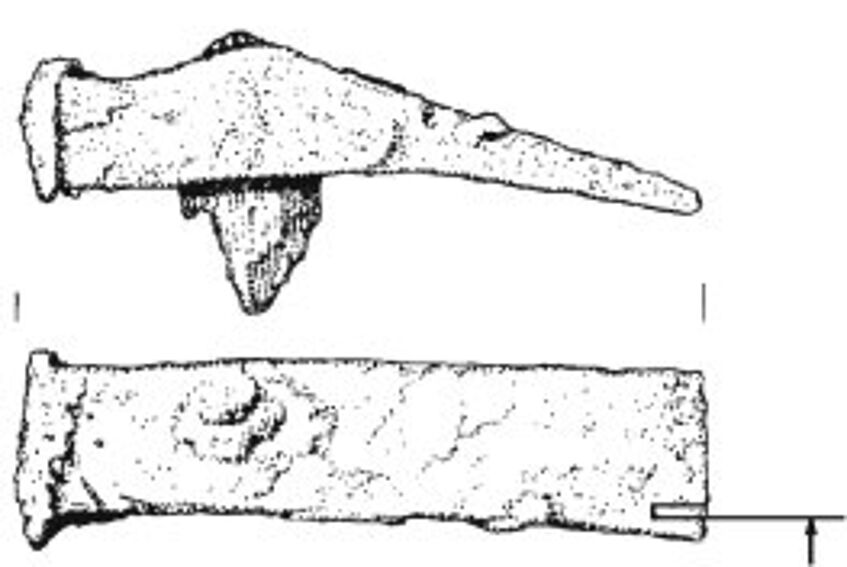
Poysdorf - Forging hammer Fnr. 62,800
Sampling point, arrow markes section plane
The hammer is made of metal with low slag and sufficient carbon content. It was reforged to its present form and subjected to heat treatment. The fin was quenched with water and left there, so that in the foremost area a hardening structure was formed, then the residual heat from the body ran forward and lead to the cooling of the structure (leading to high hardness, but reducing its brittleness).
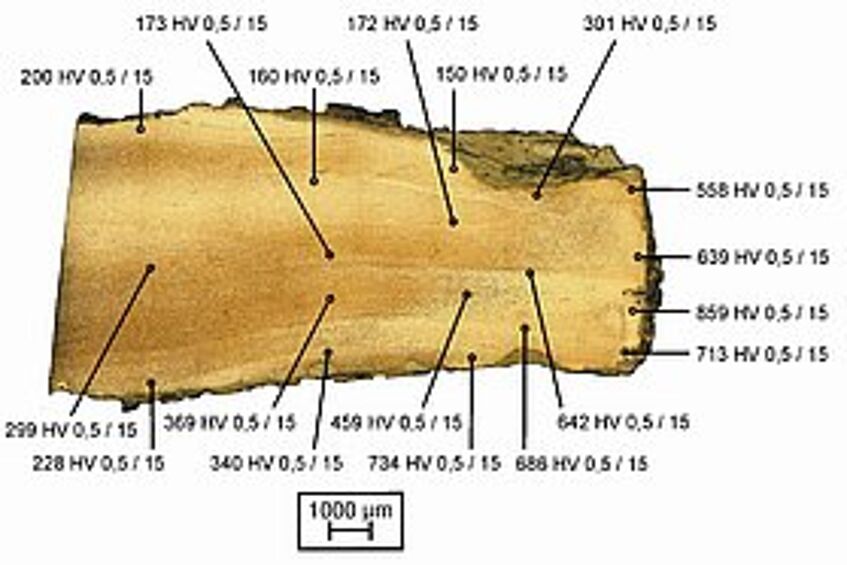
Hammer - nital etching - longitudinal grinding - Magnification about 40x
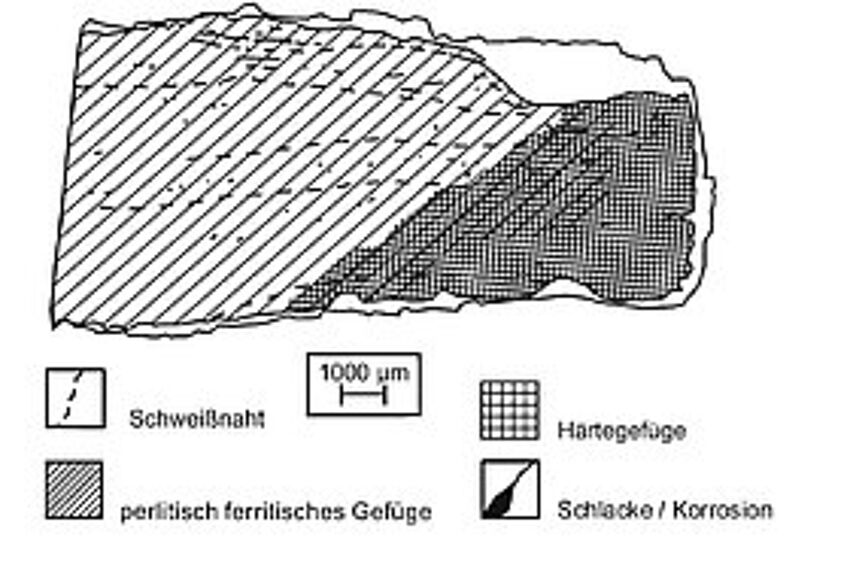
Schematic representation of the longitudinal grinding.
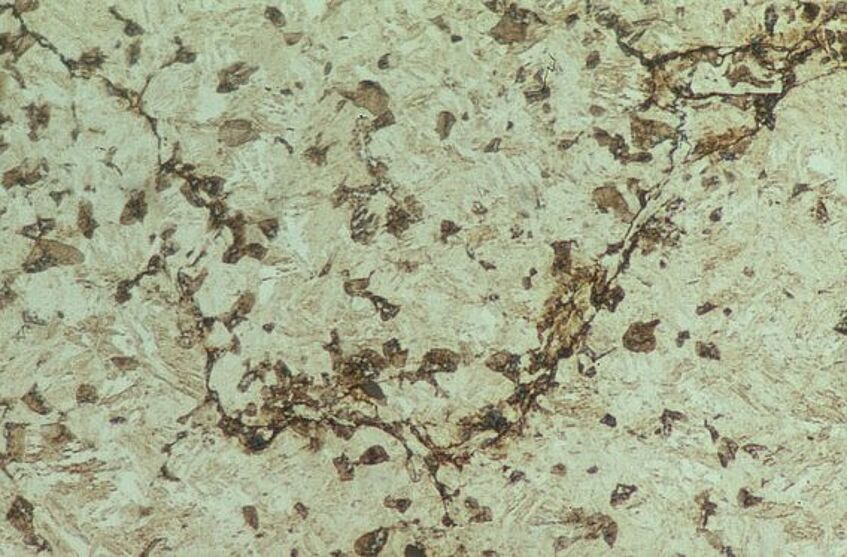
Hammer - nital etching - Enlargement approx. 980x: incomplete hardened structure at the fin - martensite with pearlite islands
Cutting device - Fnr. 62.803 - cross-section
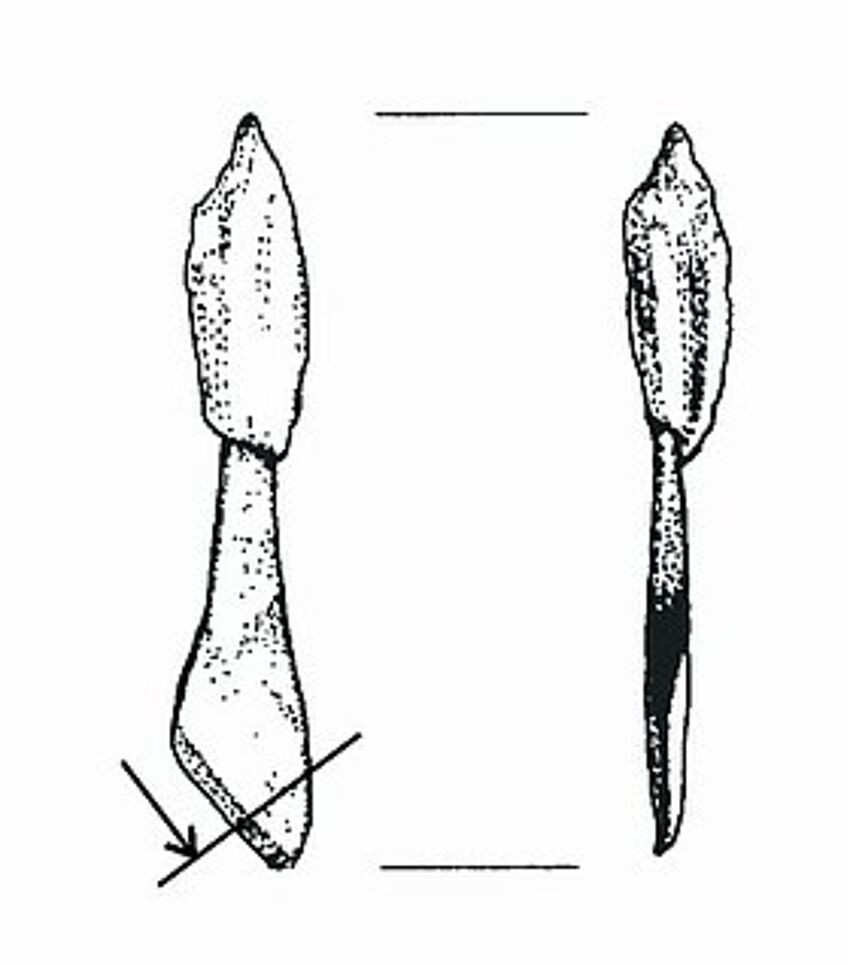
Sampling point, arrow markes section plane
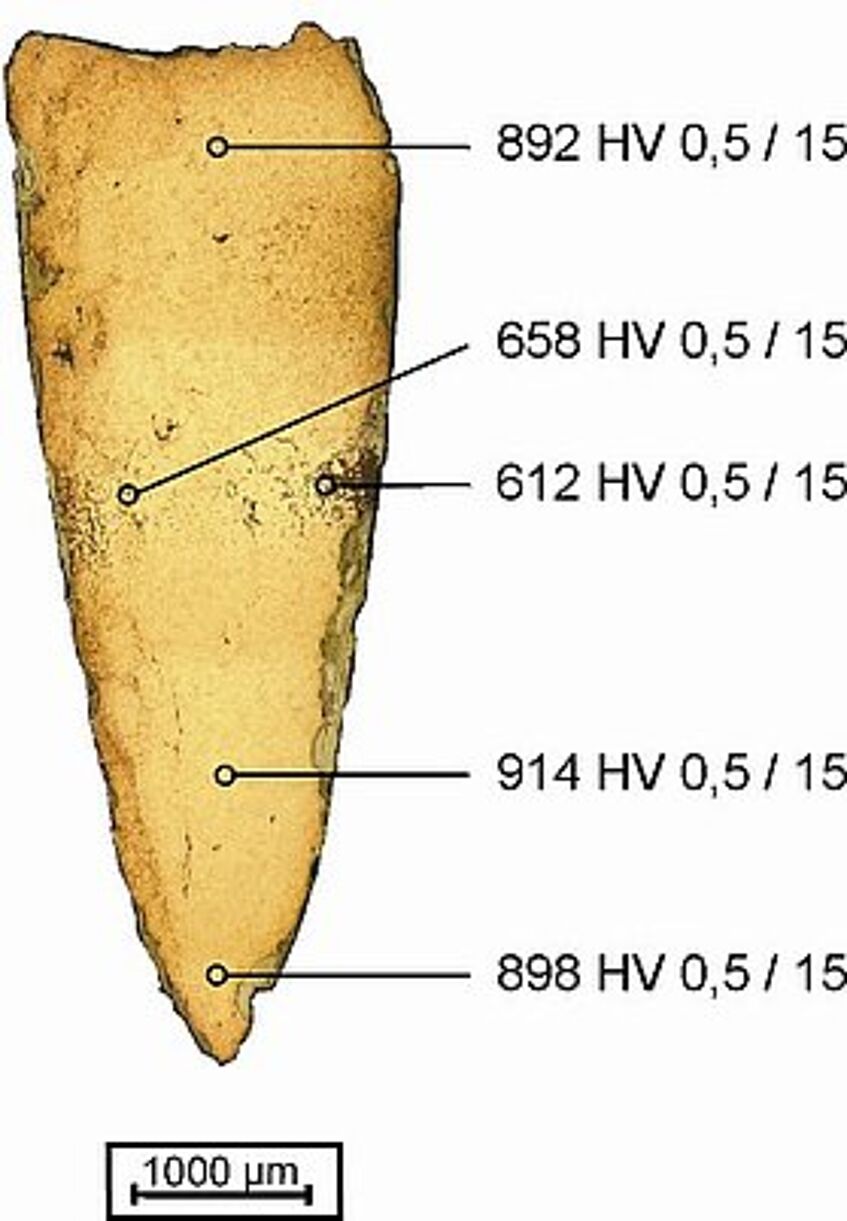
Cross-section - the cutting device also uses low-slag material with sufficient carbon content. After forging, the workpiece was quenched but not tempered, resulting in a structure of very high hardness.
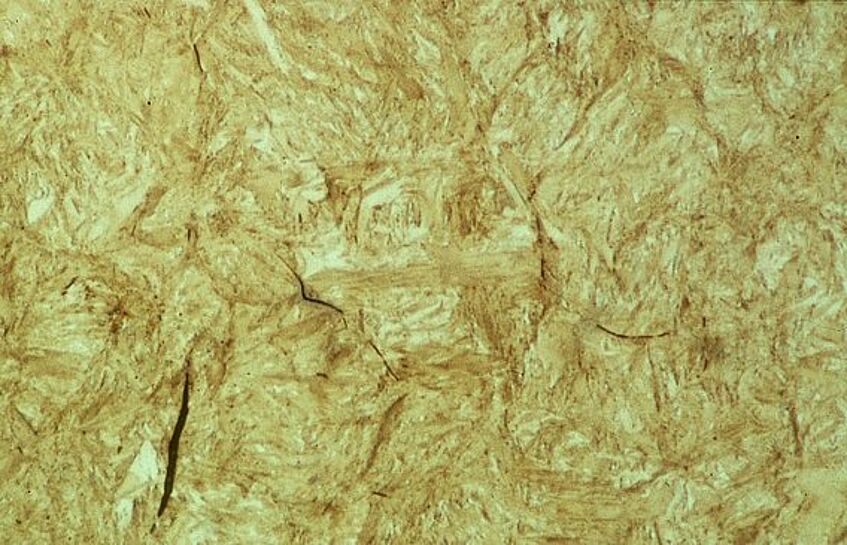
Cutting device - nital etching - Magnification approx. 180x: Martensite on the cutting edge guarantees high edge-holding quality
Results
The results allow a deep insight into the craft of forging. It was found that the tool from the forging grave of Poysdorf was fully usable and has some typical traces of work.The hammer, the file and the cutting device from Poysdorf grave 6 are similar in their metallographic appearance. All three have relatively low slag content and hardness structure, making them very suitable for their use.The carbon-rich material of the forging hammer was hardened on the fin, giving it good handling properties. Since the anvil at the impact path does not show any hardness structure, the tool combination of hardened hammer / uncured anvil is also present here.The cutting device has martensite, which makes it ideal for use in non-ferrous and precious metals processing. Thus, it could be used to process casting seams and to apply surface decorations.
Project lead: Univ.-Prof. Dr. Falko Daim, VIAS - Vienna Institute for Archaeological Science, University Vienna
Cooperationpartners: Natural History Museum, Vienna – Dept. for Prehistory (Dir. Dr. Anton Kern), Museum Brno (Direktor PhDr. Petr Šuléř), Móra Ferenc, Múzeum Szeged (Abteilungsleiter: Mag. Gábor Lörinczi)
Literature : Daim, Falko; Mehofer, Mathias, Poysdorf, Hoops - Reallexikon der germanischen Altertumskunde, Berlin, 2003, S. 327 – 332. Mehofer, Mathias, Die langobardischen Schmiedegräber von Poysdorf und Brünn- Ein archäometallurgischer Zwischenbericht, Soester Beiträge zur Archäologie 5, Soest 2004, 17 – 24.
